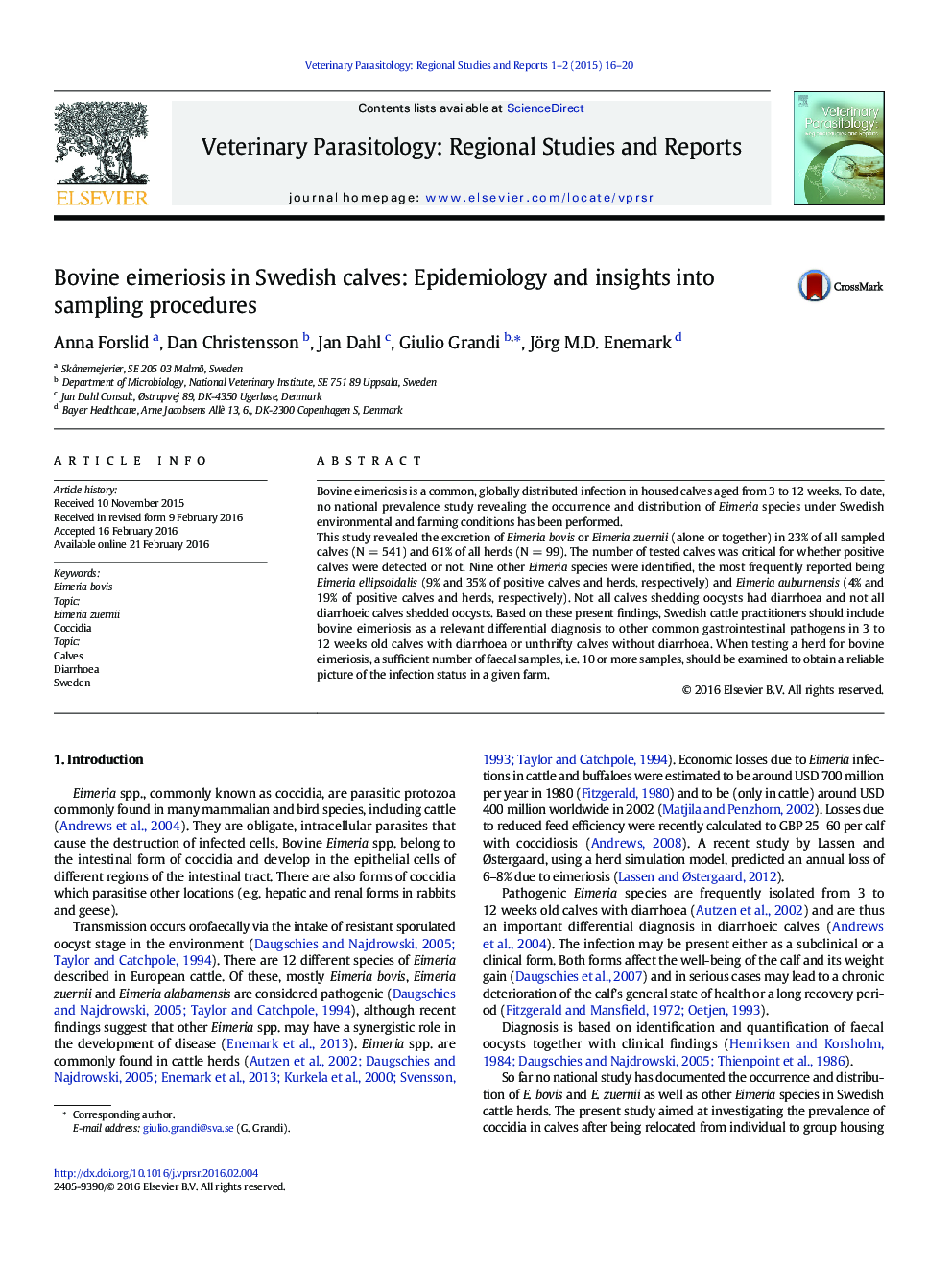| Article ID | Journal | Published Year | Pages | File Type |
|---|---|---|---|---|
| 5806472 | Veterinary Parasitology: Regional Studies and Reports | 2015 | 5 Pages |
â¢E. bovis, E. zuernii and E. ellipsoidalis are the most common bovine coccidia in Sweden.â¢Single infection by E. bovis is quite frequent in Swedish herds.â¢At least 10 samples/herd are needed to give a reliable picture of Eimeria infection.
Bovine eimeriosis is a common, globally distributed infection in housed calves aged from 3 to 12Â weeks. To date, no national prevalence study revealing the occurrence and distribution of Eimeria species under Swedish environmental and farming conditions has been performed.This study revealed the excretion of Eimeria bovis or Eimeria zuernii (alone or together) in 23% of all sampled calves (NÂ =Â 541) and 61% of all herds (NÂ =Â 99). The number of tested calves was critical for whether positive calves were detected or not. Nine other Eimeria species were identified, the most frequently reported being Eimeria ellipsoidalis (9% and 35% of positive calves and herds, respectively) and Eimeria auburnensis (4% and 19% of positive calves and herds, respectively). Not all calves shedding oocysts had diarrhoea and not all diarrhoeic calves shedded oocysts. Based on these present findings, Swedish cattle practitioners should include bovine eimeriosis as a relevant differential diagnosis to other common gastrointestinal pathogens in 3 to 12Â weeks old calves with diarrhoea or unthrifty calves without diarrhoea. When testing a herd for bovine eimeriosis, a sufficient number of faecal samples, i.e. 10 or more samples, should be examined to obtain a reliable picture of the infection status in a given farm.
